Vintage Kansas Maps
Kansas, known as "The Sunflower State," took statehood in 1861. Over the years since then, mapmakers have created many beautiful, antique maps showcasing the state’s cities and counties.
Here in our archives, we have many old Kansas maps for nearly all of the state’s counties, including Johnson, Sedgwick, Shawnee, Wyandotte, Douglas, Leavenworth, Riley, Butler, Reno, and Saline.But our most requested maps are typically for the cities of Wichita, Overland Park, Kansas City, Olathe, Topeka, Lawrence, Shawnee, Manhattan, Lenexa, and Salina.
If you’d like to browse our collection of old Kansas maps, use the menu in the upper right of this page to sort by popularity, average rating, latest additions, or price. If you don’t find what you’re looking for, don’t hesitate to contact us. We’d be happy to check our archives.
About Kansas
Kansas is well known for its fertile farmland. The state’s most abundant crop is wheat (Kansas is sometimes referred to as the “breadbasket of the U.S.”), and it’s a top producer of soybeans and corn used for grain. Cattle and hogs are also raised as livestock throughout Kansas. The state’s agricultural roots date back before it took statehood in 1861, and family-owned farms and ranches make up over 80 percent of the businesses that operate there today.
Vast, grassy plains span across much of the state of Kansas, but it's not all flat land as one might think. For example, in the northeast part of the state, you'll find forests, woodlands, and gently rolling hills. You might be surprised to learn that are over 5 million acres of forest land in Kansas filled with cedar, maple, and oak trees.
What's also interesting about Kansas is that the geographic center of the contiguous United States is located in the state, just outside the town of Lebanon. It’s marked with a stone monument. There’s not much to see other than the marker and a small building called the U.S. Center Chapel. But it’s worth stopping by if you’re in the area.
In weather, Kansas breaks records when it comes to tornados—it's one of the states located in the infamous "Tornado Alley." On average, Kansas experiences over 80 tornados annually. The deadliest was an F-5 tornado that touched down in Udall, Kansas, in 1955. Eighty people lost their lives, and hundreds were injured. The most destructive tornado to hit Kansas was an F-5 that struck Greensburg in 2007. It leveled 95% of the town.
Finally, did you know that in 1874, early settlers in Kansas experienced a massive, destructive grasshopper invasion? It came on without warning in July—suddenly, millions of grasshoppers swept across prairies across Kansas, the Dakotas, and on through Texas. The swarms were so thick they blocked out the sun. The grasshoppers wiped out entire crops and even devoured wool off live sheep, tree bark, and wooden tool handles. The settlers were left with no way to support themselves and survive the upcoming winter. However, once word got out across America, folks helped out by sending money and supplies by train.
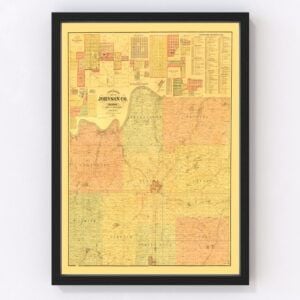


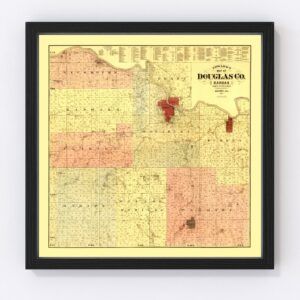
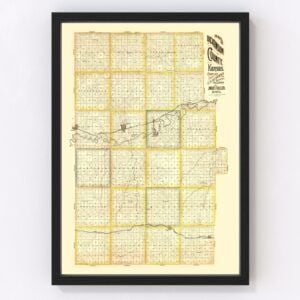
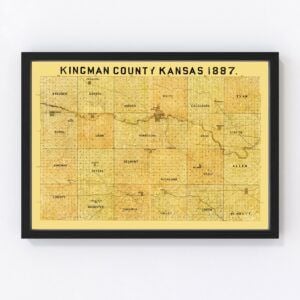
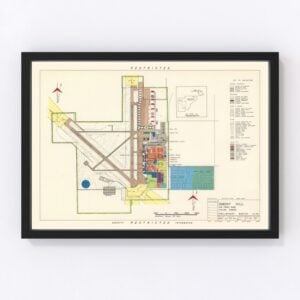
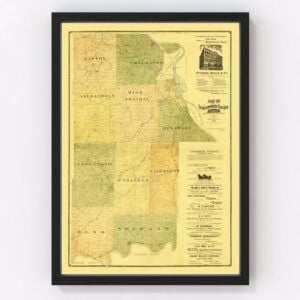

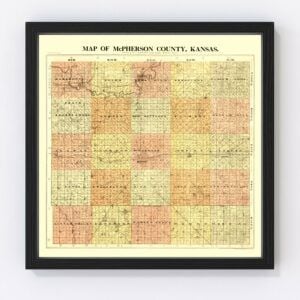


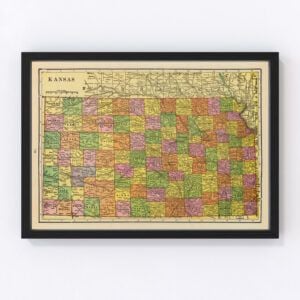
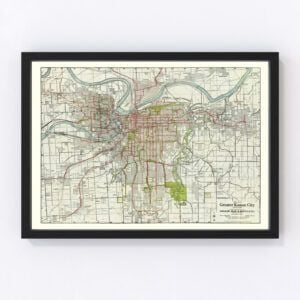


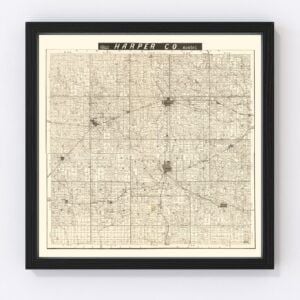
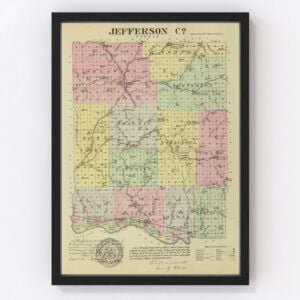
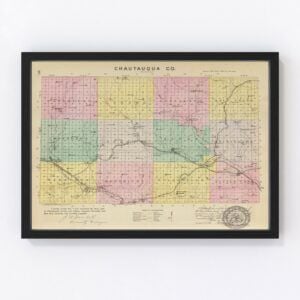

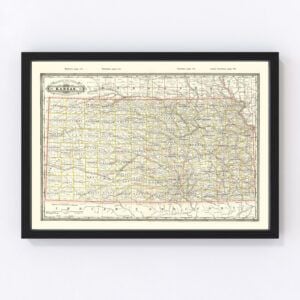
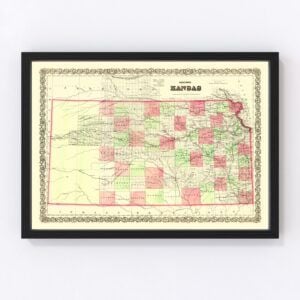
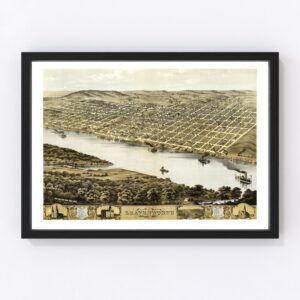
Vintage Kansas Maps
Kansas, known as "The Sunflower State," took statehood in 1861. Over the years since then, mapmakers have created many beautiful, antique maps showcasing the state’s cities and counties.
Here in our archives, we have many old Kansas maps for nearly all of the state’s counties, including Johnson, Sedgwick, Shawnee, Wyandotte, Douglas, Leavenworth, Riley, Butler, Reno, and Saline.But our most requested maps are typically for the cities of Wichita, Overland Park, Kansas City, Olathe, Topeka, Lawrence, Shawnee, Manhattan, Lenexa, and Salina.
If you’d like to browse our collection of old Kansas maps, use the menu in the upper right of this page to sort by popularity, average rating, latest additions, or price. If you don’t find what you’re looking for, don’t hesitate to contact us. We’d be happy to check our archives.
About Kansas
Kansas is well known for its fertile farmland. The state’s most abundant crop is wheat (Kansas is sometimes referred to as the “breadbasket of the U.S.”), and it’s a top producer of soybeans and corn used for grain. Cattle and hogs are also raised as livestock throughout Kansas. The state’s agricultural roots date back before it took statehood in 1861, and family-owned farms and ranches make up over 80 percent of the businesses that operate there today.
Vast, grassy plains span across much of the state of Kansas, but it's not all flat land as one might think. For example, in the northeast part of the state, you'll find forests, woodlands, and gently rolling hills. You might be surprised to learn that are over 5 million acres of forest land in Kansas filled with cedar, maple, and oak trees.
What's also interesting about Kansas is that the geographic center of the contiguous United States is located in the state, just outside the town of Lebanon. It’s marked with a stone monument. There’s not much to see other than the marker and a small building called the U.S. Center Chapel. But it’s worth stopping by if you’re in the area.
In weather, Kansas breaks records when it comes to tornados—it's one of the states located in the infamous "Tornado Alley." On average, Kansas experiences over 80 tornados annually. The deadliest was an F-5 tornado that touched down in Udall, Kansas, in 1955. Eighty people lost their lives, and hundreds were injured. The most destructive tornado to hit Kansas was an F-5 that struck Greensburg in 2007. It leveled 95% of the town.
Finally, did you know that in 1874, early settlers in Kansas experienced a massive, destructive grasshopper invasion? It came on without warning in July—suddenly, millions of grasshoppers swept across prairies across Kansas, the Dakotas, and on through Texas. The swarms were so thick they blocked out the sun. The grasshoppers wiped out entire crops and even devoured wool off live sheep, tree bark, and wooden tool handles. The settlers were left with no way to support themselves and survive the upcoming winter. However, once word got out across America, folks helped out by sending money and supplies by train.
